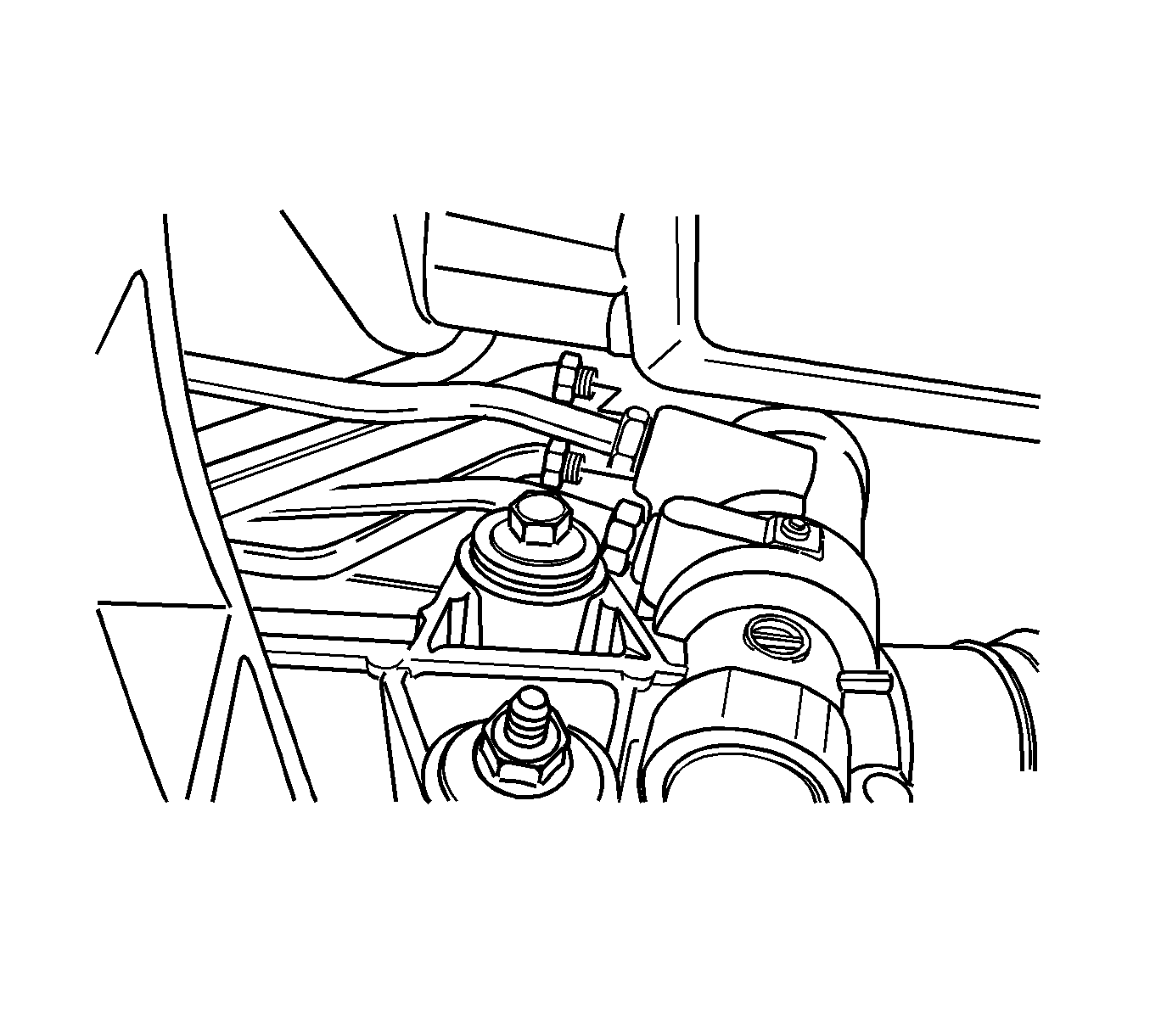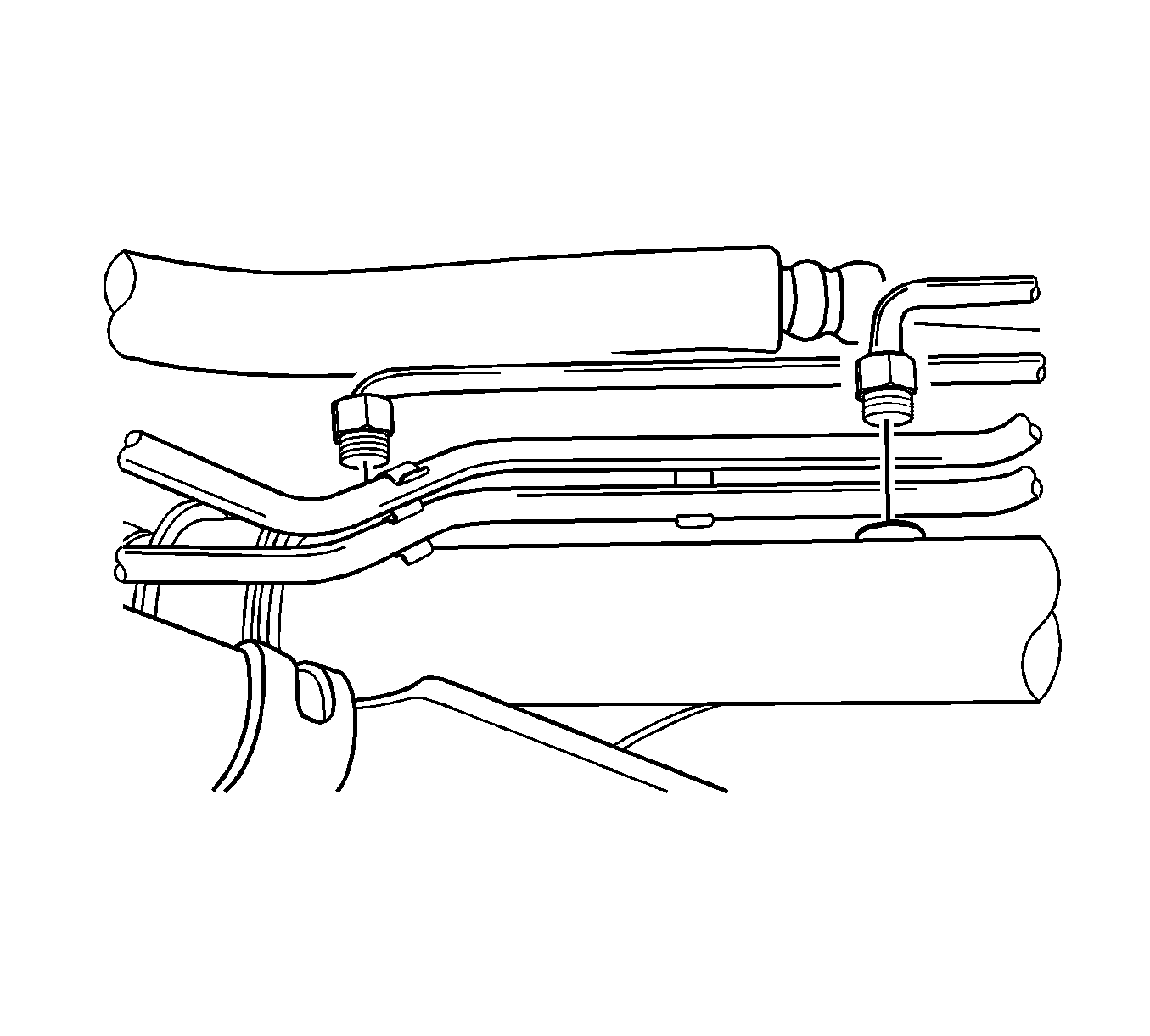Removal Procedure
- Siphon the power steering fluid from the fluid reservoir.
- Raise and suitably support the vehicle.
- Disconnect the power steering gear at the valve end. Replace the O-ring seals as needed.
- Disconnect the power steering gear hydraulic cylinder pipes from the power steering gear at the cylinder end.
- Remove the steering gear hydraulic cylinder pipes from the vehicle.

Caution: Refer to Vehicle Lifting Caution in the Preface section.
Notice: Do not start the vehicle with any power steering gear inlet or outlet hoses disconnected. When disconnected, plug or cap all openings of components. Failure to do so could result in contamination or loss of power steering fluid and damage to the system.

Installation Procedure
- Lubricate any new O-ring seals with power steering fluid.
- Place the O-ring seals into the housing and install the steering gear hydraulic cylinder pipes.
- Connect the power steering gear hydraulic cylinder pipes to the power steering gear at the valve end.
- Connect the power steering gear hydraulic cylinder pipes to the power steering gear at the cylinder end.
- Lower the vehicle.
- Fill the fluid reservoir with power steering fluid.
- Inspect for leaks. If there are leaks, correct the cause of the leaks and bleed the system. Refer to Power Steering System Bleeding .

Notice: Refer to Fastener Notice in the Preface section.
Tighten
Tighten the hydraulic cylinder line fittings at
the valve end to 18 N·m (13 lb ft).

Tighten
Tighten the hydraulic cylinder line fittings at
the cylinder end to 28 N·m (21 lb ft).
Notice: When adding fluid or making a complete fluid change, always use a power steering fluid meeting GM Spec. No. 9985010 or equivalent. Fluid for cold climates is also available through GM Dealerships; refer to Specifications for further information. Failure to use the proper power steering fluid can cause power steering hose and seal damage, fluid leaks and pump failure.
